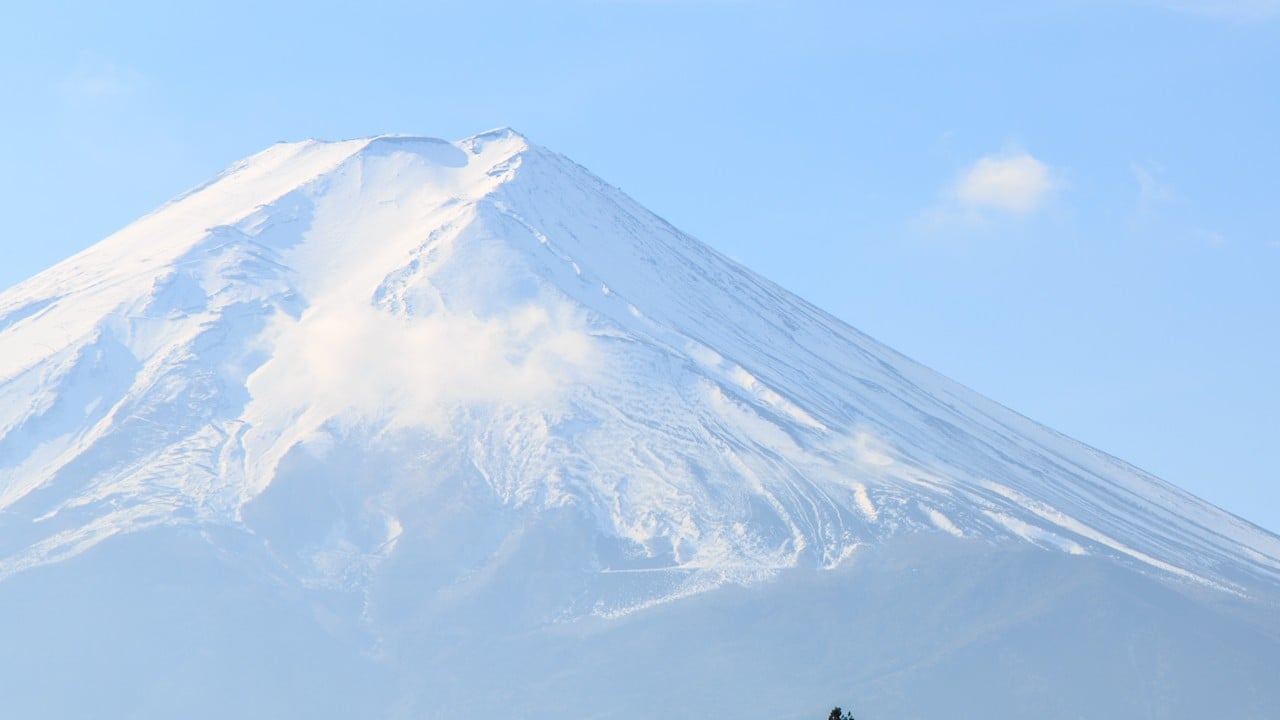The Fuji Dream Bridge, on Route 139 in Shizuoka prefecture, aligns directly with the outline of Mount Fuji. From some angles, the steps up to the bridge appear to lead towards the mountain peak. While residents have used the bridge for decades without much fuss, it has become a social media hotspot in recent months.
“It all began in December last year when a foreign influencer put images on Instagram,” said Miyu Toyama, an official of the Exchange Tourism Division of the city government. “The image soon spread and now, almost all the people who visit the bridge are foreigners, not Japanese.”
The number of visitors to the bridge has risen to over 100 on an average weekend day, according to city officials’ estimates.
“People even come when it is raining or if Mount Fuji is covered in clouds, which causes problems because they stay longer, hoping that it will clear and that means lots of people can be there at the same time,” Toyama told This Week in Asia. “It is becoming a problem.”
Residents have complained about illegal parking, rubbish left by visitors, loud noise and even people defecating in public. The gate to a local home has also been damaged twice during collisions involving vehicles but there have been no reported injuries.
The city has placed signs in multiple languages in the area, asking visitors not to cause a nuisance and not to run across a busy road by the bridge. Local authorities have built a small car park, which can only hold four vehicles. They are considering building another parking facility.
“The city is getting a lot of complaints,” Toyama said. “People who live there are very angry although the owners of shops there are getting a lot of customers so they are happy.”
Local tensions could intensify as more people discover the views of Mount Fuji from the bridge, Toyama added, and this could lead to a situation similar to that in Fujikawaguchiko, about 30km north of Fuji City and on the opposite side of the mountain.
“We are happy that people want to visit Fuji City because there are not so many tourists sights here and we want more visitors to come but we need to find a way to make sure the problems are reduced,” Toyama said.
Comments on social media sites and travel firms’ web pages rave about the views from the bridge, with several overseas readers asking for advice on how to reach the location when they are in Japan.
Residents of Fuji City do not share the enthusiasm.
“The Mount Fuji Dream Bridge is truly a lawless area right now,” according to a message linked to a TV Asahi news story. “Police patrol regularly but when tourists see them, they get back on the pavement. People park on the road, get out and take photos.
“The littering of cigarette butts and drink containers around the area is also terrible. When residents walk their dogs, the tourists shout at them for ruining their photos.”
Another message reads: “I think many foreign tourists who come to Japan mistakenly think this entire country is a theme park. There is a lack of awareness that this is Japanese culture and that people actually live here. It seems they have no respect for things.”
Renewed concerns linked to overtourism coincide with the announcement by the Japan National Tourism Organisation on Wednesday that a record 3.04 million foreign visitors were in the country in April, up 4 per cent from the same month in 2019, before the onset of the Covid-19 pandemic.
The figure was a 56 per cent rise from a year earlier and marked the second consecutive month that foreign visitors totalled above 3 million. Arrivals from South Korea, the US, Southeast Asia and the Middle East were particularly strong, the agency said.
Ashley Harvey, a travel marketing analyst who has worked in Japan’s travel sector for more than 15 years, said accusations of overtourism were “inevitable”. As soon as measures were taken at one place to reduce the problem, social media influencers would find the next visitors’ magnet at another location, Harvey added.
The issue was avoidable and more planning should have been done at the national, regional and city levels during the travel industry’s downturn to solve these “entirely foreseeable problems” in preparation for the return of visitors in large numbers when the pandemic was over, according to Harvey.
“Japan has a very small number of overtourism pinch-points and there is under-tourism in 95 per cent of the country.
“Japan uses geographical and seasonal brand assets – Mount Fuji and cherry blossoms are the most obvious examples – as hooks for the travel sector and there is no methodology on how to distribute visitors away from those hotspots.”
The travel sector could have introduced quotas at certain peak times and must-see locations to limit overtourism, and dynamic pricing for visitor access to help generate funds for local communities.
“Tourism could be a significant economic pillar for places in the most rural parts of Japan that are dying out but it does require a strategy that brings together the public and private sectors and work together towards the same goal,” he said.
As a result of poor planning by local authorities, residents living in places hit by overtourism would have to continue putting up with blocked roads and rubbish on the streets, he said.
“And if they are so worried about trash, then a good place to start would be to put some rubbish bins out.”


